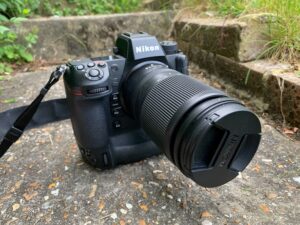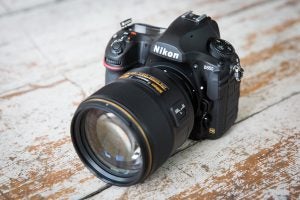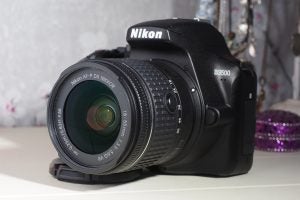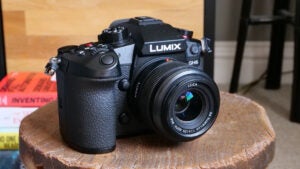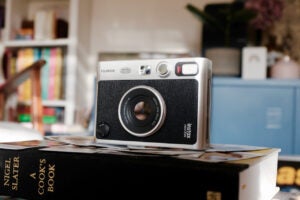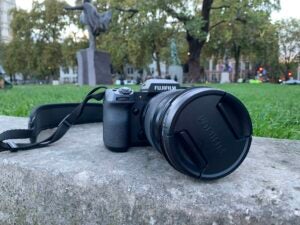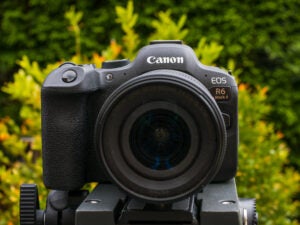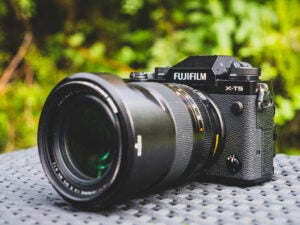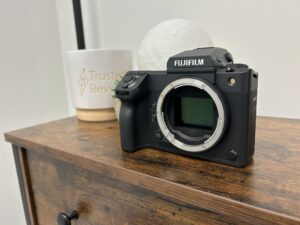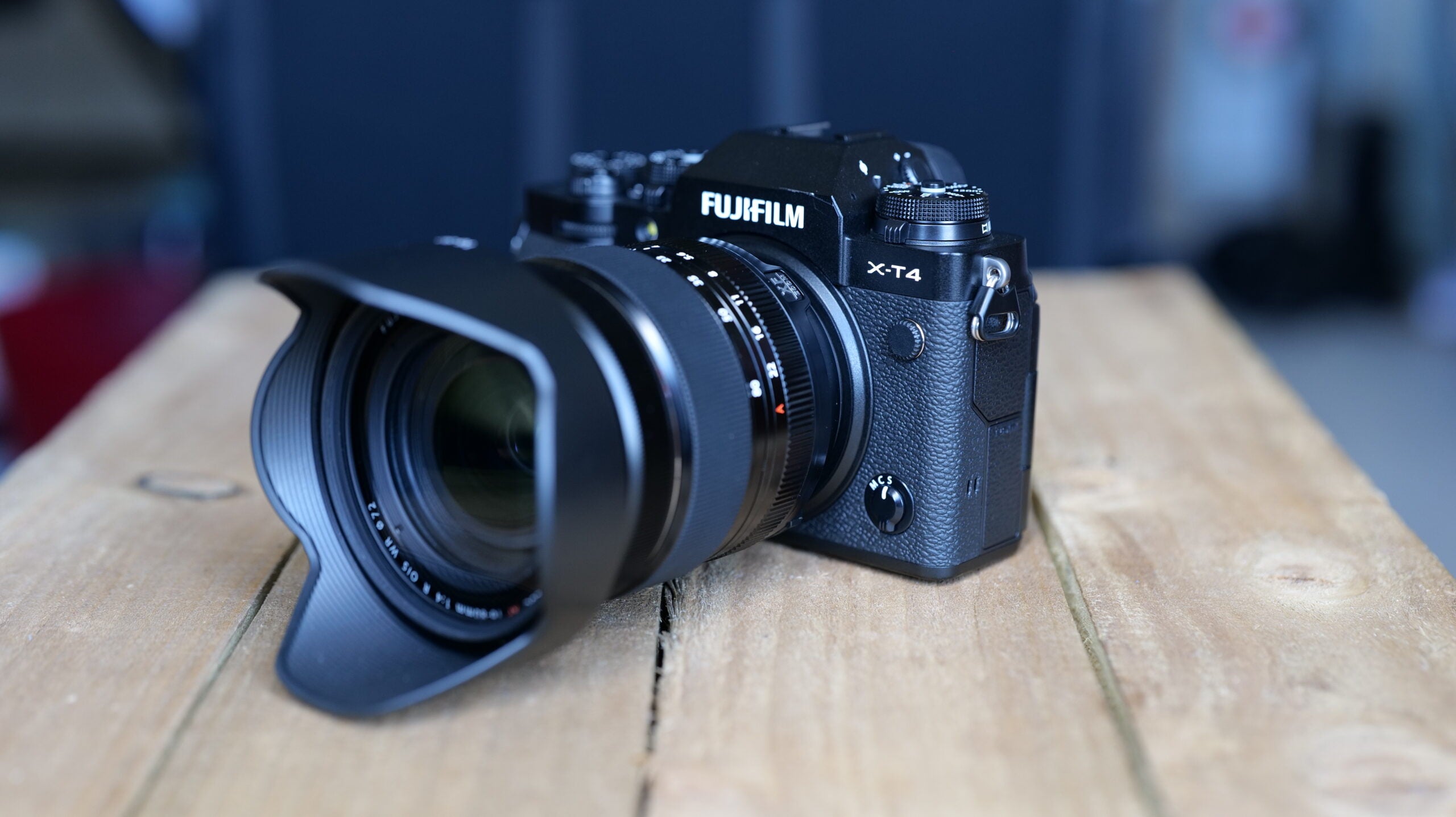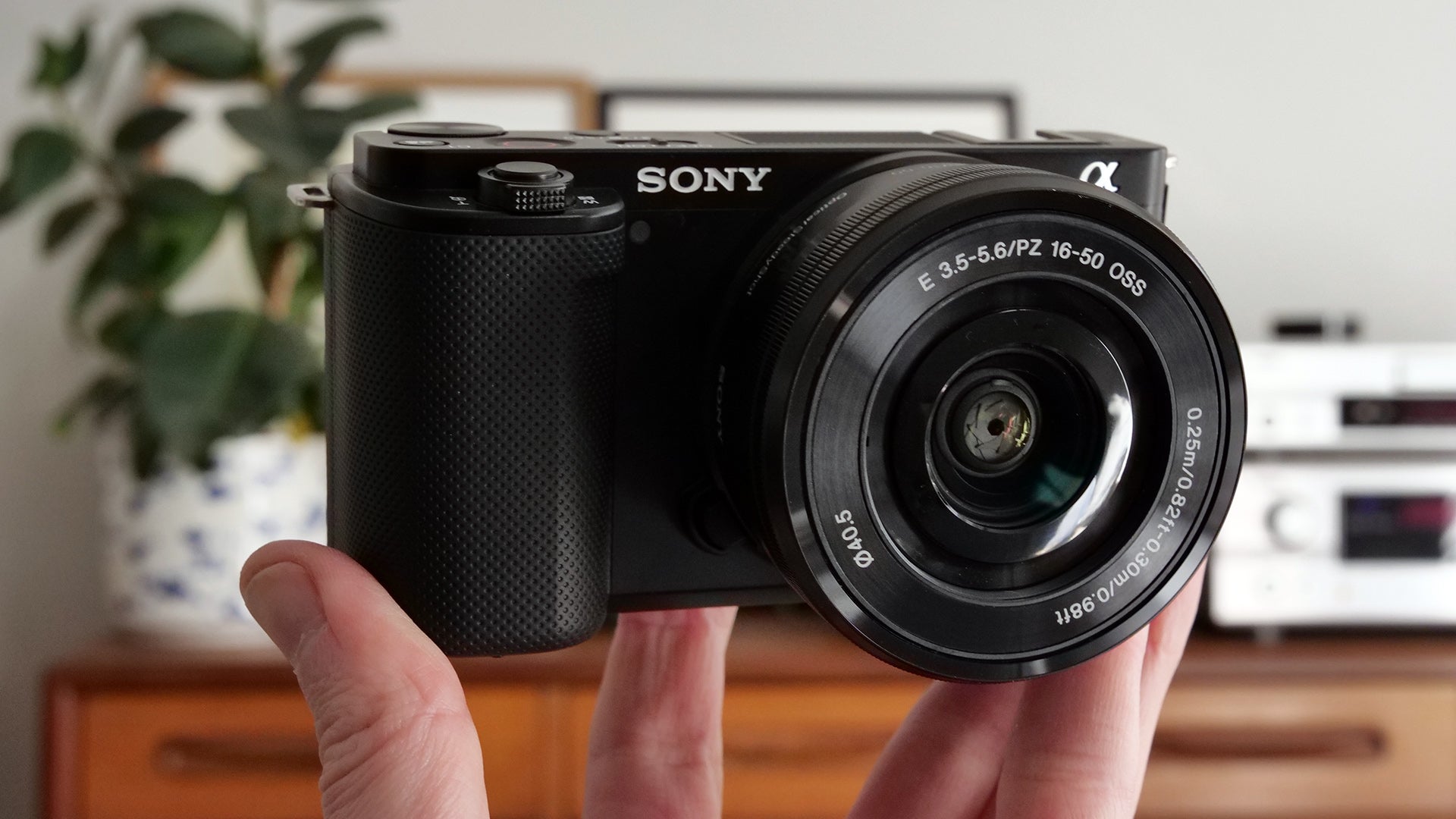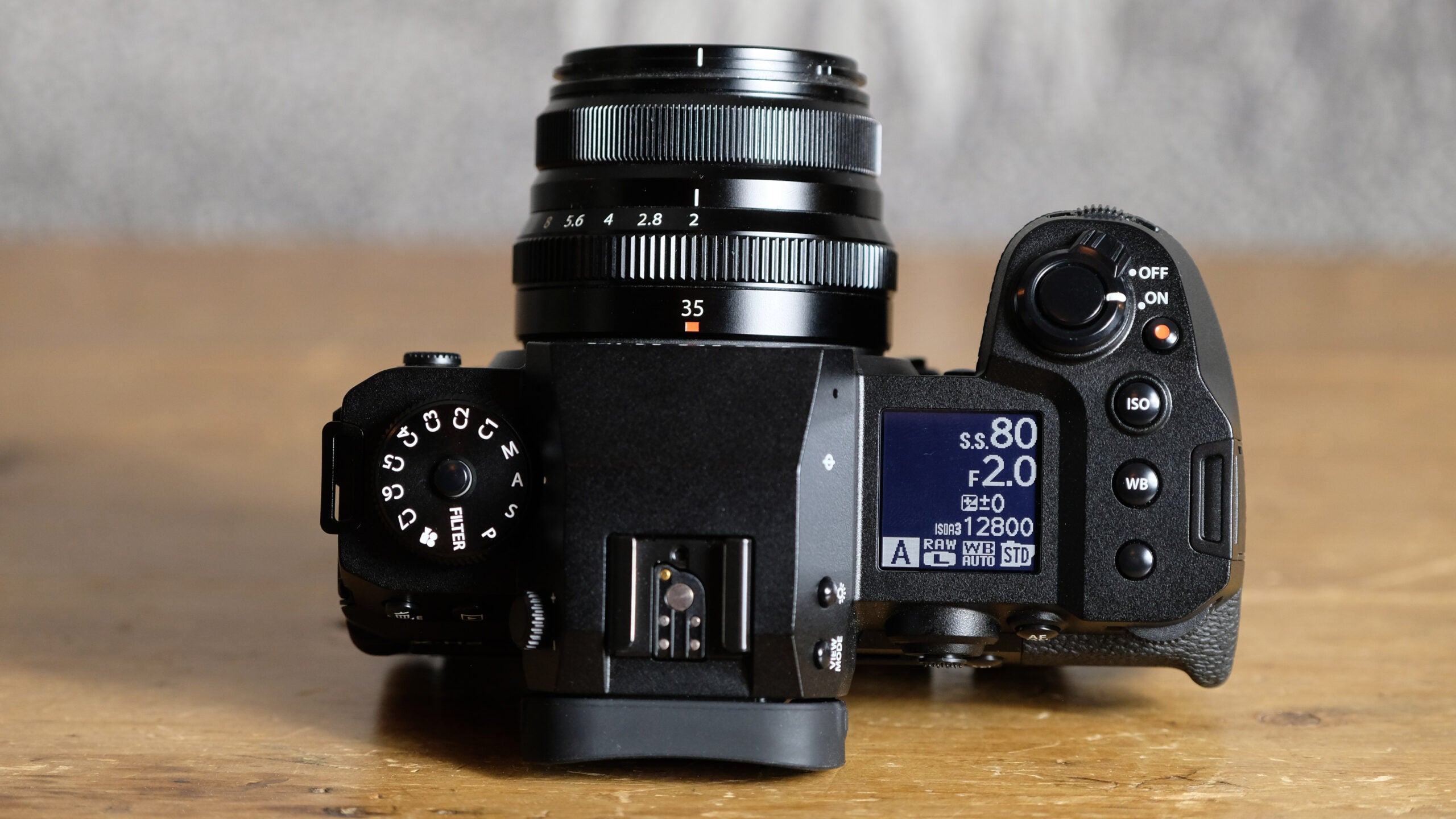Best Camera for Photography 2024: All the top cameras we’ve tested
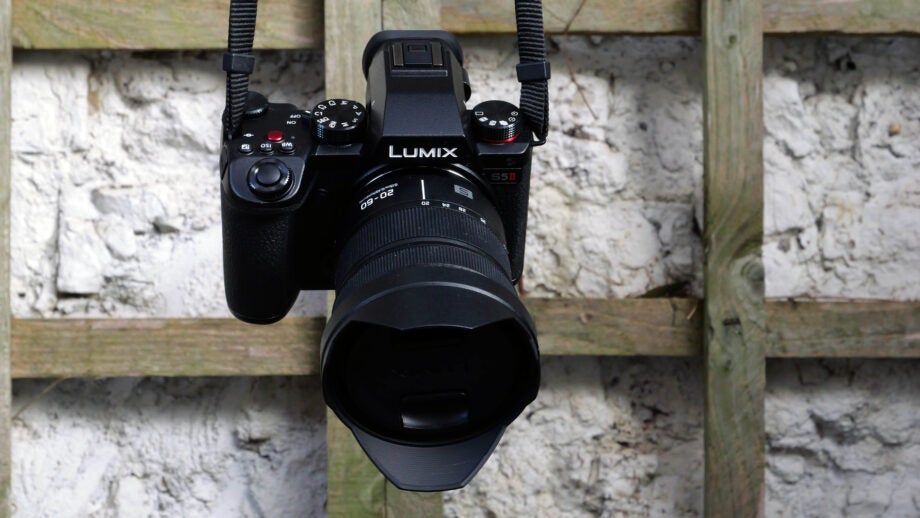
If you’ve considered buying a new camera, you’ll know that choosing one isn’t the easiest feat. There are a number of factors to consider, including the type of camera you want, specs, image quality and, of course, price. We’ve put together this guide to help you find the best camera to fit your needs.
Cameras come in many forms. From DSLRs and mirrorless cameras to instant cameras and video-savvy vlogging options, we’ve covered them all in this best list. We’ve even identified the best picks for beginners and those on a budget so you won’t have to spend thousands of pounds to get a great camera.
Every camera on this list has been rigorously tested and reviewed. We look at important factors, including the picture and video quality, battery life, durability, software and lenses to thoroughly examine what each camera has to offer. We also look at what features each camera packs, from fast and accurate autofocus to snappy burst modes and in-body stabilisation to help you find the perfect camera for your kit.
Scroll down to read more about the best cameras we’ve tested, including the pros and cons of each model and links to our in-depth reviews complete with image samples to give you an idea of what they’re capable of.
If you’ve already narrowed your choice to a specific camera type, make sure to visit our other best lists for the top-performing cameras in each corner of the market. These include the best DSLRs, best mirrorless cameras, best compact cameras, best vlogging cameras, best action cameras and best instant cameras.
Best cameras at a glance
- Best mirrorless camera: Nikon Z9 – check price
- Best DSLR: Nikon D850 – check price
- Best under £2000: Fujifilm X-T5 – check price
- Best for beginners: Nikon D3500 – check price
- Best for video quality: Panasonic Lumix GH6 – check price
- Best for vloggers: Sony ZV-E10 – check price
- Best instant camera: Fujifilm Instax Mini Evo – check price
- Best for high-speed shooting: Fujifilm X-H2S – check price
- Best full-frame camera for video: Panasonic Lumix S5II – check price
- A fantastic full-frame all-rounder: Canon EOS R6 Mark II – check price
- Best medium format camera: Fujifilm GFX100 II – check price
How we test
We test every camera we review thoroughly. We use set tests to compare features properly and we use it as our main device over the review period. We’ll always tell you what we find and we never, ever, accept money to review a product.
- Robust and versatile design
- 120fps shooting
- 8K video recording
- Expensive
- Large and heavy body
- Additional cost of CFexpress or XQD card
- 45.7-megapixel sensor captures exceptionally fine detail
- Fast viewfinder autofocus with silent shooting option in Live View
- Rear thumb-operated sub-selector for fast AF point positioning
- Extremely good 1840-shot battery life
- No phase detection AF in Live View
- Touchscreen operation doesn’t include key exposure settings
- Wireless SnapBridge connectivity needs improvement
- Good quality kit lens
- Very good image quality
- Fast and silent autofocus
- Unexpectedly snappy live view
- Great for keen learners
- Value for money
- Fixed rear screen
- Video is HD rather than 4K
- Chunky compared to a mirrorless camera
- Massive range of video modes
- Superb video image quality
- No-limit recording times
- Effective image stabilisation
- Easy handling
- Occasional autofocus quirks
- Some features unavailable at launch
- Small and lightweight
- Good video quality and options
- Fast, accurate autofocu
- Beginner-friendly features
- No viewfinder
- Big crop with electronic image stabilisation
- Limited touchscreen functionality
- It looks fantastic
- Plenty of effects to add an extra flair to shots
- Easy to use
- Digital smarts save on wasted shots
- Screen is difficult to see in bright conditions
- Some odd quirks with the UI and app
- Slow to charge
- Impressive 40fps burst mode
- Quick and accurate subject detection
- Support for 6.2K video at 30p or 4K at 120p
- Expensive for an APS-C camera and pricier than the X-H2
- HEIF file format isn’t universally supported
- Design has less character than the X-T5
- Huge range of video options
- Superb stabilisation
- Much improved autofocus
- Cables can block the screen
- No tally lights
- Increase in resolution to 24-megapixel
- Major video enhancements
- Dual SD card setup
- Lower resolution than rivals
- No 4K slow motion option
- Huge 40-megapixel resolution
- Fast 15 frames per second burst mode
- Advanced stabilisation system
- Crop-sensor
- Design won’t suit all
- Large high-resolution sensor
- Detachable viewfinder
- Lots of upgrades over GFX100/GFX100S
- On the heavier side
- There are full frame cameras better suited to high-speed photography
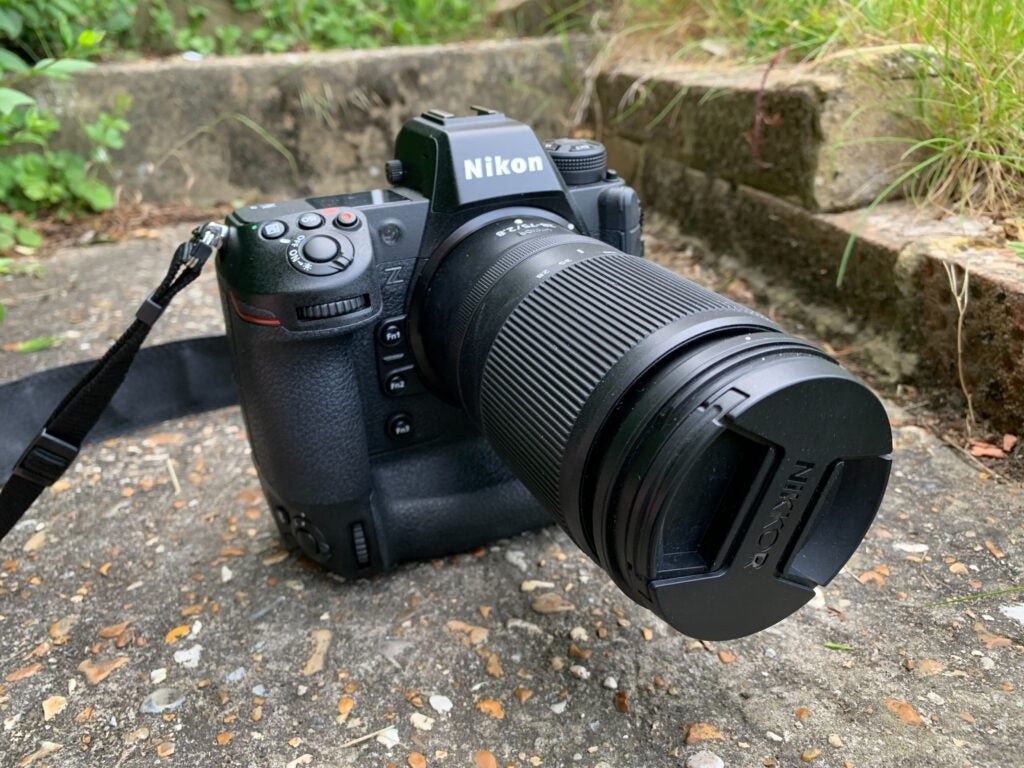
Nikon Z9
Best mirrorless camera
Pros
- Robust and versatile design
- 120fps shooting
- 8K video recording
Cons
- Expensive
- Large and heavy body
- Additional cost of CFexpress or XQD card
If you’re in need of an incredibly versatile mirrorless camera, the Nikon Z9 won’t disappoint. The Z9 is particularly skilled when it comes to high-speed photography, with a burst mode capable of capturing sports and wildlife with full autofocus capabilities.
As with many mirrorless cameras, the Z9 is smaller and more lightweight than its DSLR equivalent, the Nikon D6. That said, it certainly isn’t the most travel-friendly choice at 1340g and with its chunky square body.
However, the weather-sealed design is durable and the two grips and shutter release buttons make snapping portraits as comfortable and intuitive as capturing landscape shots. Other design features include a bright, 3000-nit electronic viewfinder with a speedy 120fps refresh rate and a 4-axis monitor with a 170-degree viewing angle for capturing shots at tricky angles.
The Z9 takes advantage of a 45-megapixel full-frame stacked CMOS sensor, a 493-point autofocus system with 10 AF-area modes and detection for nine subject types. There’s also 8K/60p and 4K/120p video support.
The Z9 certainly isn’t the cheapest camera on this list and the CFexpress and XQD memory cards needed are also quite pricey, but if you’re looking for a large and capable mirrorless camera, you’ll struggle to find better than the Nikon Z9.
Reviewer: Hannah Davies
Full review: Nikon Z9
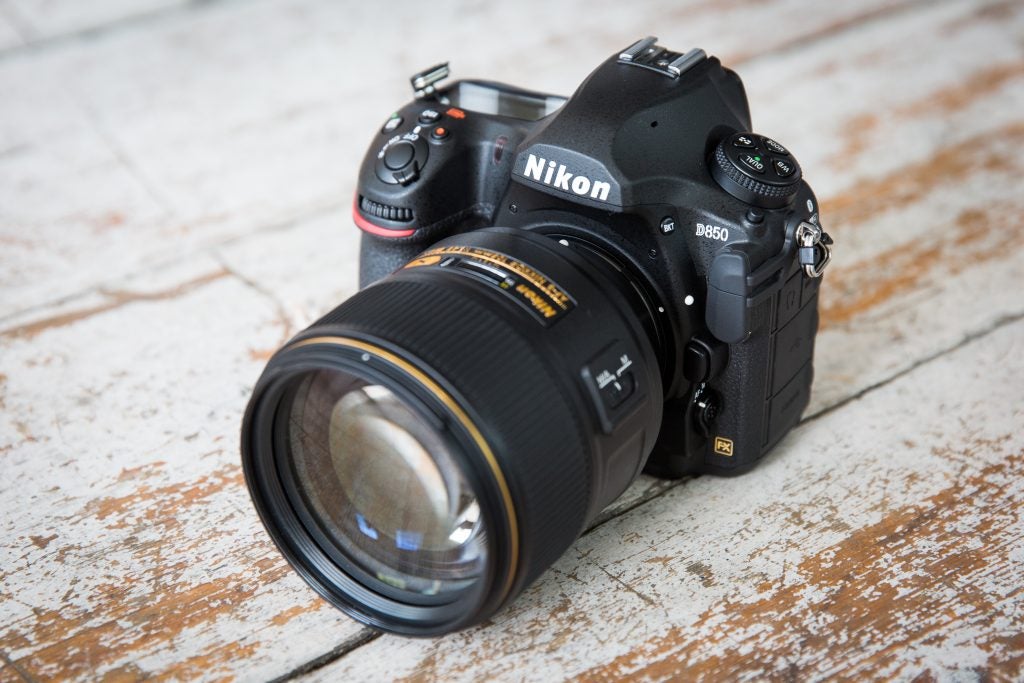
Nikon D850
Best DSLR
Pros
- 45.7-megapixel sensor captures exceptionally fine detail
- Fast viewfinder autofocus with silent shooting option in Live View
- Rear thumb-operated sub-selector for fast AF point positioning
- Extremely good 1840-shot battery life
Cons
- No phase detection AF in Live View
- Touchscreen operation doesn’t include key exposure settings
- Wireless SnapBridge connectivity needs improvement
If you’re looking for a full-frame DSLR, the Nikon D850 is the best we’ve reviewed in recent years, earning an impressive 4.5/5 stars from our reviewer.
The camera features a weather-sealed magnesium alloy design for durability with physical buttons and a good amount of customisation options. There’s a large 100% viewfinder at the top and a 3.2-inch, 2.36m-dot touchscreen monitor that can be tilted to shoot at different angles.
Like the Z9, the camera packs a 45.7-megapixel sensor that puts the D850 in the same category as the 50.6-megapixel Canon 5DS and the 42-megapixel Sony A7R II which were released around the same time. There’s also the EXPEED 5 processor on board, which you can find in the Nikon D500 and the D5.
The camera takes advantage of a fast and accurate 153-point Multi-CAM 20K autofocus system, 7fps continuous shooting (9fps if you pay extra for the attachable battery grip), and support for 4K video capture at 30fps.
Reviewer: Michael Topham
Full review: Nikon D850
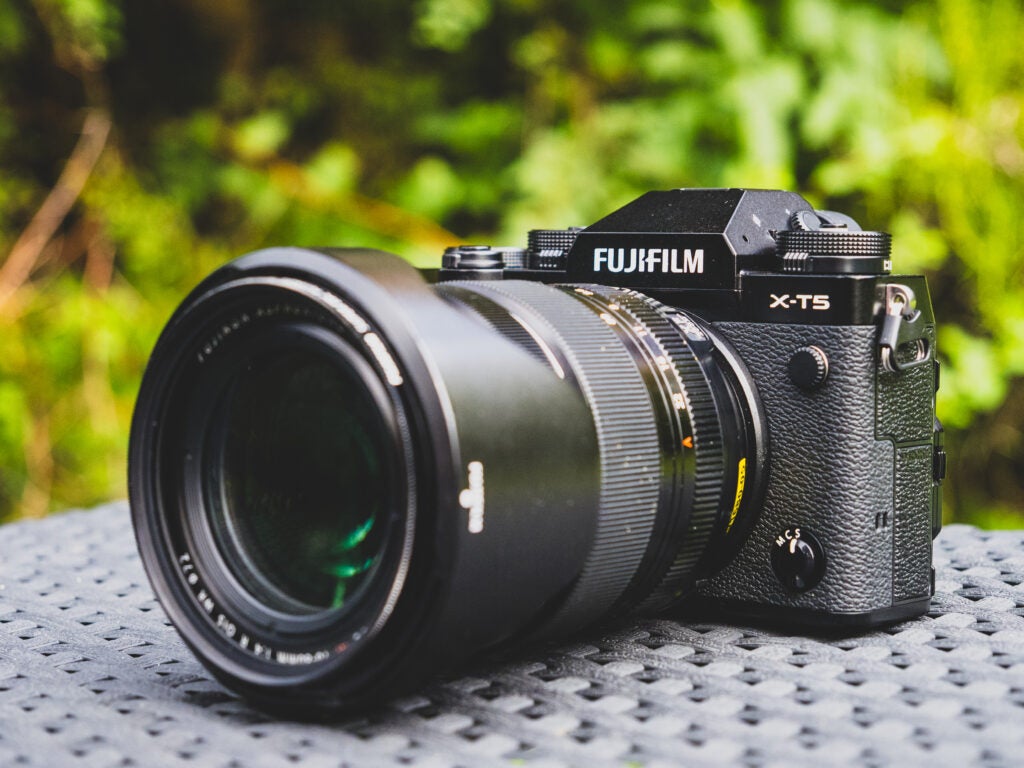
Fujifilm X-T5
Best under £2000
Pros
- Huge 40-megapixel resolution
- Fast 15 frames per second burst mode
- Advanced stabilisation system
Cons
- Crop-sensor
- Design won’t suit all
The Fujifilm X-T5 is a fantastic pro-grade camera for photography that doesn’t break the bank at just £1600. That’s less than half the price of our current favourite pick, the Nikon Z9.
The X-T5 combines retro good looks with plenty of features and the highest-resolution APS-C sensor on the market to create a camera worthy of taking over the Fujifilm X-T4.
The Fujifilm X-T5 sports a similar eye-catching design to the X-T4 with classic milled dials and an even more lightweight feel than its predecessor. Despite its retro design, the X-T5 is remarkably robust with 56 weather-sealed points to keep out dust and moisture, as well as the ability to operate in temperatures as low as -10 degrees.
Along with a huge 40-megapixel crop sensor, the Fujifilm X-T5 benefits from speedy autofocus and a rapid 15fps burst rate that opens up the camera to wildlife and sports photographers alike.
Subject detection allows the X-T5 to detect humans, eyes, animals, birds, cars, motorcycles, bicycles, planes and trains, while five-axis IBIS with seven stops of compensation ensures that camera shake is kept to a minimum even in low-light conditions and when using longer focal lengths.
Additionally, the battery life on the X-T5 allows for 140 more shots than its predecessor and the X-T5 can be charged on the go using a power bank.
When it comes to video, the Fujifilm X-T5 is capable of capturing 6.2K footage at up to 30p and at 4:2:2 10-bit internally. This means the files can capture a large amount of tonal data that will help with colour grading later down the line. There’s also support for Fujifilm’s F-Log 2 profiles internally, as well as Apple ProRes RAW when captured externally.
Coming back to image quality, we found that RAW files help a huge amount of tonal data, making it easy to recover detail in lighter and darker areas in editing. You can even push beyond the 40-megapixel sensor and capture huge 160-megapixel shots thanks to the Pixel Shift feature that combines 220 frames into a single high-quality image.
If you’re looking for a huge 40-megapixel sensor in a small package with retro flair, the Fujifilm X-T5 is hard to beat.
Reviewer: Matty Graham
Full Review: Fujifilm X-T5
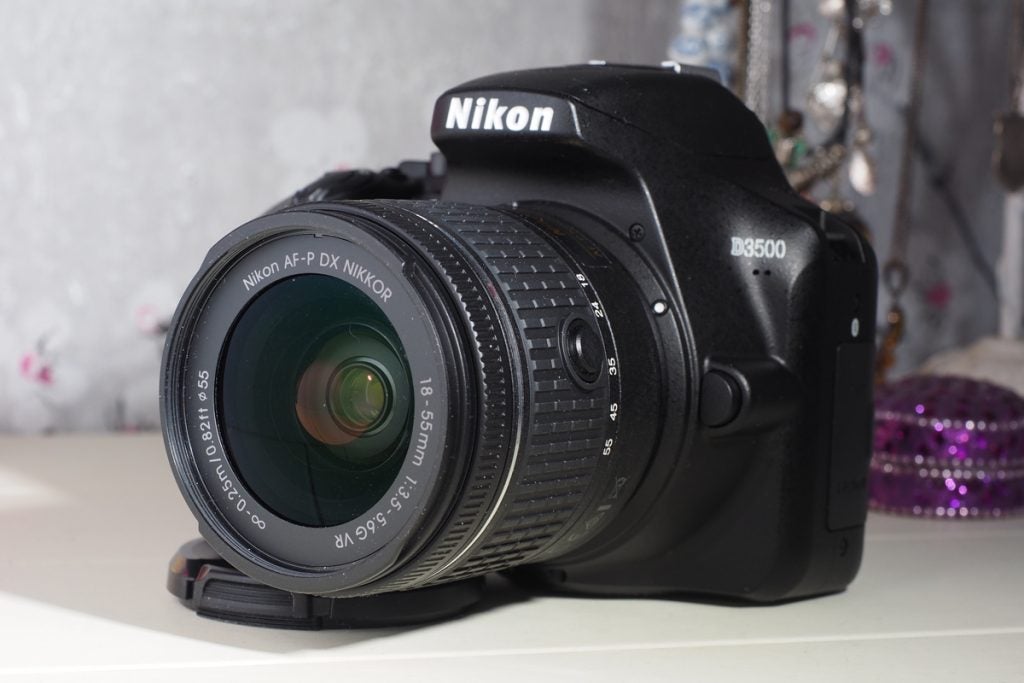
Nikon D3500
Best for beginners
Pros
- Good quality kit lens
- Very good image quality
- Fast and silent autofocus
- Unexpectedly snappy live view
- Great for keen learners
- Value for money
Cons
- Fixed rear screen
- Video is HD rather than 4K
- Chunky compared to a mirrorless camera
The Nikon D3500 is an affordable choice for anyone searching for a fantastic DSLR for beginners. It’s also significantly smaller than many DSLRs you’ll find on the market (though still a bit bigger than most mirrorless alternatives).
The camera is limited to a fixed 921K-dot display, but the body takes advantage of the additional grip and balance you’ll find with a DSLR, as well as the extended 1550-shot battery life. The 18-55mm AF-P kit lens is also ideal for first-timers offering consistently sharp results across its focal range.
The D3500 is powered by a 24-megapixel APS-C sensor and packs a good number of features you might expect to get with a more professional DSLR, including the full set of program AE, aperture-priority, shutter-priority and manual modes.
The 100-25,600 ISO range allows for decent low-light performance for its price and the 5fps burst mode is more than fast enough to capture kids and pets in motion.
Video is limited to HD rather than 4K, but stills are very good. We found the camera capable of capturing realistic colours in both indoor and outdoor settings.
If you’d rather opt for a Canon model, the Canon 250D is also a great cheap option for beginners.
Reviewer: Rod Lawton
Full review: Nikon D3500
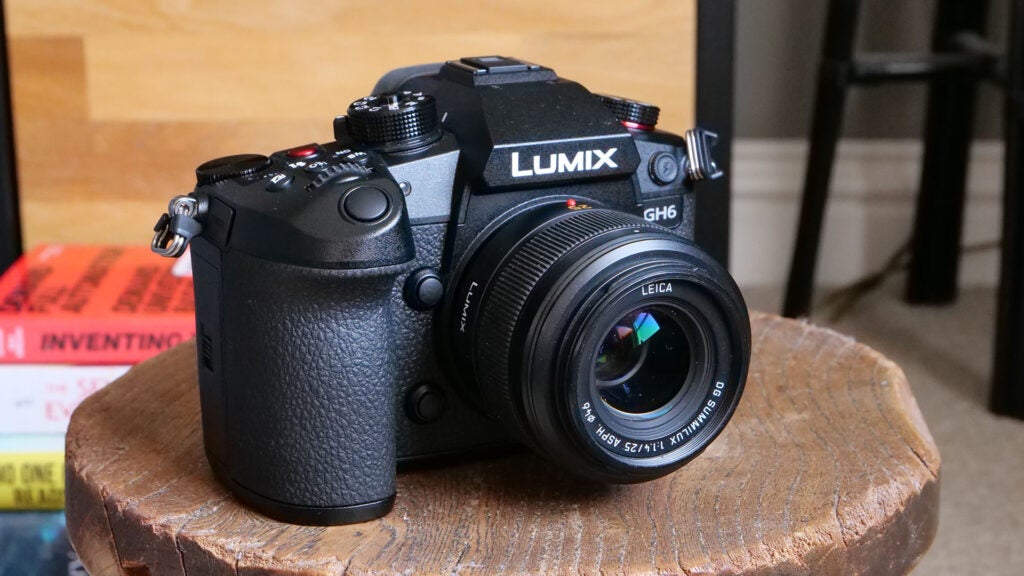
Panasonic Lumix GH6
Best for video quality
Pros
- Massive range of video modes
- Superb video image quality
- No-limit recording times
- Effective image stabilisation
- Easy handling
Cons
- Occasional autofocus quirks
- Some features unavailable at launch
If you’re looking for a mirrorless camera with impressive video capabilities, the Panasonic Lumix GH6 is a fantastic video-first option.
The GH6 is capable of capturing 5.7K video at up to 60fps with support for Apple ProRes 422 HQ, dedicated headphone and microphone ports and full-size HDMI for external monitoring. There’s also support for CFexpress Type B memory cards.
We found the in-body image stabilisation with up to 7.5 stops of motion compensation ensured we captured stable video, though the autofocus did encounter issues tracking moving objects.
For stills, there’s a high-resolution photo mode that merges bursts together to capture 100-megapixel images, but don’t mistake this for a photography-first camera. While the GH6 can snap some great images, you’d be better off looking elsewhere if your priority isn’t high-quality video.
As far as improvements over the previous models go, the GH6 packs the same design as the other models in its GH series with the addition of a new cooling system and a double-hinged touchscreen for more flexible shooting.
Reviewer: Sam Kieldsen
Full review: Panasonic Lumix GH6

Sony ZV-E10
Best for vloggers
Pros
- Small and lightweight
- Good video quality and options
- Fast, accurate autofocu
- Beginner-friendly features
Cons
- No viewfinder
- Big crop with electronic image stabilisation
- Limited touchscreen functionality
While the GH6 offers some of the highest quality video, the Sony ZV-E10 is the best when it comes to vlogging features. It’s also beginner-friendly and affordable, making it an ideal choice if you’re looking to move beyond your smartphone’s recording capabilities.
The ZV-E10 is one of the smallest and most lightweight mirrorless cameras we’ve reviewed at just 343g. To put that into perspective with the other cameras in this list, that’s almost a quarter of the weight of the Nikon Z9.
There’s no electronic viewfinder, with the camera instead relying on a bright, 3-inch flip-out touchscreen, but there are plenty of vlogger and influencer features onboard. The list includes image stabilisation, real-time autofocus tracking for the eyes and face and the flexibility of Sony’s E-mount lens system. For those less concerned about swapping out the lenses, the ZV-1 is similarly great and slightly cheaper.
The ZV-E10 delivers rich and clean 4K video at up to 30fps or 1080p at 60fps and there are Sony’s Slow and Quick modes for features like slow motion capture. The camera is also capable of snapping some sharp 24.2-megapixel stills.
One of the more unique vlogging features here is Sony’s Product Showcase mode, which is sure to come in handy for reviewers and influencers in particular who find themselves holding objects up to the camera. Though we found it could be a little fussy at times, the feature nevertheless offered a good improvement over the standard face detection-based mode when used in these situations.
Reviewer: Sam Kieldsen
Full review: Sony ZV-E10
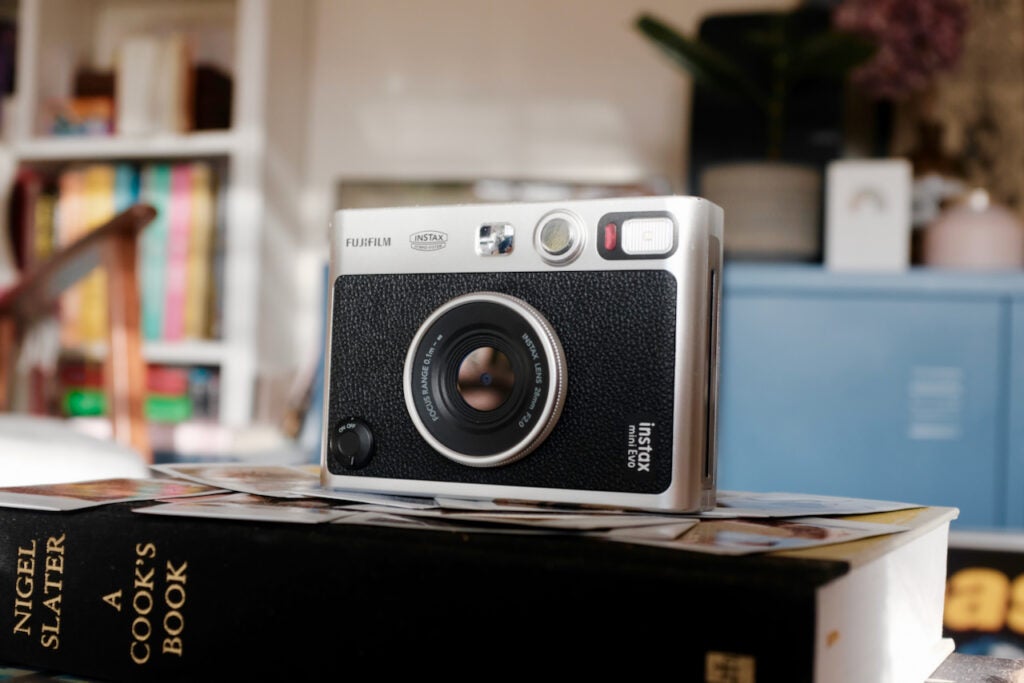
Fujifilm Instax Mini Evo
Best instant camera
Pros
- It looks fantastic
- Plenty of effects to add an extra flair to shots
- Easy to use
- Digital smarts save on wasted shots
Cons
- Screen is difficult to see in bright conditions
- Some odd quirks with the UI and app
- Slow to charge
If you’re interested in a more spontaneous way to capture photos, the Fujifilm Instax Mini Evo is the best instant camera we’ve tried and tested.
This hybrid instant camera has a lightweight plastic build with a retro faux leather and silver aesthetic that doesn’t look dissimilar to the compact Fujifilm X100V.
The hybrid design makes it possible for the camera to hold 45 images at a time, allowing you to preview them on the 3-inch LCD screen and print them as desired without wasting unnecessary paper and ink.
Despite this, the camera maintains the charm of a traditional instant camera with its simple controls, including two shutter buttons, flash, a preset dial and a lever to print your images.
The image quality offers the same punchy colours and detailed results as other Instax cameras, though we did find that skin tones had the tendency to come out a bit pale. If you’re looking to capture something a bit more stylistic, there’s also the option to add vivid, pale and monochrome filters to your photos, while lens effects on offer include vignetting, soft focus and blur.
That said, the camera doesn’t do too well in low-lighting conditions so that’s something to be aware of if you plan on taking the camera to parties and other dim indoor environments.
Reviewer: Max Parker
Full review: Fujifilm Instax Mini Evo

Fujifilm X-H2S
Best for high-speed shooting
Pros
- Impressive 40fps burst mode
- Quick and accurate subject detection
- Support for 6.2K video at 30p or 4K at 120p
Cons
- Expensive for an APS-C camera and pricier than the X-H2
- HEIF file format isn’t universally supported
- Design has less character than the X-T5
The Fujifilm X-H2S is our best mirrorless camera for high-speed photography.
The Fujifilm X-H2S arrived in 2022 as one of two hybrid cameras alongside the identical-looking X-H2. However, where the X-H2 focuses primarily on resolution, the X-H2S is all about speed.
With the X-H2S, Fujifilm has opted for a more neutral look over the retro design of the X-T5. The camera has a small and lightweight body with a 3-inch vari-angle display, an OLED EVF and a monochrome LCD monitor so you can check your settings at a glance.
The X-H2S takes advantage of a new processor and image sensor combo, being the first camera powered by the new X Processor 5 and X-Trans CMOS 5 HS sensor. It also benefits from a new autofocus algorithm, which we found did a fantastic job of tracking people and vehicles alike. Then there’s the incredibly speedy 40fps burst mode which makes the X-H2S the fastest Fujifilm X series camera yet.
The camera doesn’t come equipped with the 40-megapixel sensor found on the X-H2, nor does it take advantage of that camera’s 160-megapixel Pixel Shift Multi-Shot mode. What the X-H2S does capture are wonderfully bright and sharp 26-megapixel stills. Colours are vibrant and punchy and Fujifilm’s famous film simulation modes make it easy to replicate a range of looks and styles directly in-camera.
The hybrid camera can also capture sharp 6.2K video at up to 30p or 4K at up to 120p with support for Apple ProRes 422 HQ on board, too.
The X-H2 has a 40-megapixel sensor for those looking to snap even higher-resolution images and you can get a full-frame camera like the Sony Alpha 7 IV for just a few hundred pounds more than the APS-C X-H2S.
However, for those looking for a lightweight camera with fast autofocus and an even more impressive burst mode, the X-H2S is a great choice.
Reviewer: Hannah Davies
Full review: Fujifilm X-H2S
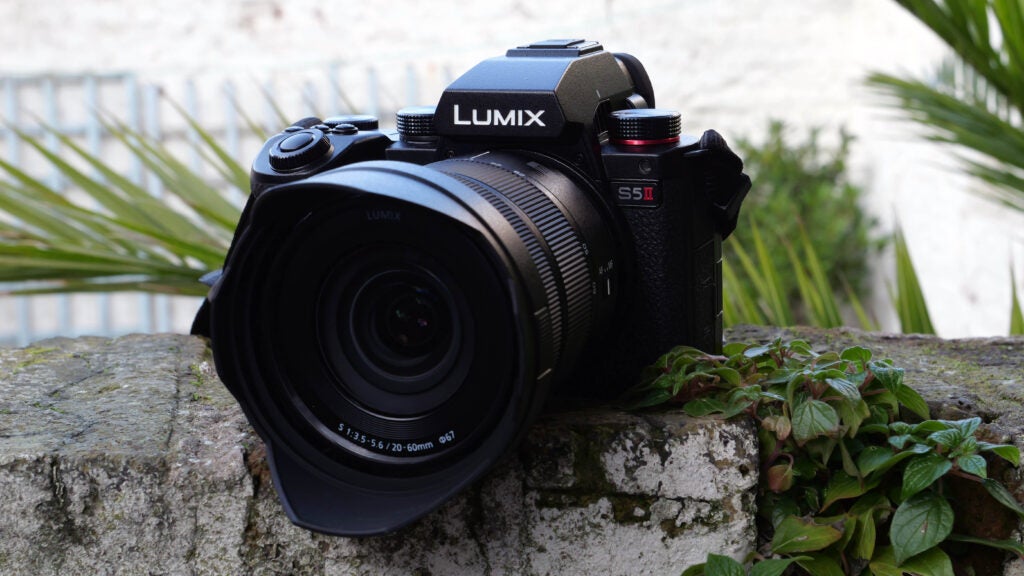
Panasonic LUMIX S5II
Best full-frame camera for video
Pros
- Huge range of video options
- Superb stabilisation
- Much improved autofocus
Cons
- Cables can block the screen
- No tally lights
The Panasonic Lumix S5II might just be Panasonic’s most widely appealing full-frame camera to date. The S5II improves upon the Panasonic S5, making it a great buy for young and aspiring content creators.
The Lumix S5II is Panasonic’s first mirrorless camera to adopt phase-detection AF, combining it with its usual contrast-based Depth-from-Defocus autofocus to create a hybrid system comparable to those used by competitors.
The camera also delivers many upgrades over the still-available Panasonic S5, including a new full-frame sensor, a new processor, upgraded image stabilisation and an integrated heat management system to support unlimited 6K and 4K video capture.
The Lumix S5II has a DSLR-style body with a tough and weatherproof magnesium alloy construction. It’s a bit bulkier than the Panasonic S5 due to the integrated cooling system, but the Panasonic S5II is still compact and lightweight for a full-frame camera.
The camera comes with a brand new 3.68-million dot OLED viewfinder, which we found to be wonderfully crisp and detailed with high contrast and a fast refresh rate giving it almost the feel of an optical viewfinder. There’s also a 3-inch monitor with a vari-angle design for versatile positioning and a range of touch controls, including the ability to change settings and set autofocus points.
In-body image stabilisation is excellent for shooting video, as is the new phase hybrid autofocus system. The AF isn’t as snappy as that found on some Sony and Canon cameras, but it’s very capable and a marked improvement over the Panasonic S5.
Photographers can shoot at up to 9fps with the mechanical shutter or 30fps with the electronic shutter and connectivity options are strong, with a full-size HDMI port, 3.5mm headphone and mic inputs and a USB-C port for charging all included.
All-in-all, the Panasonic S5II is a powerful all-rounder for anyone looking to capture full-frame video and sharp photos.
Reviewer: Sam Kieldsen
Full Review: Panasonic Lumix S5II
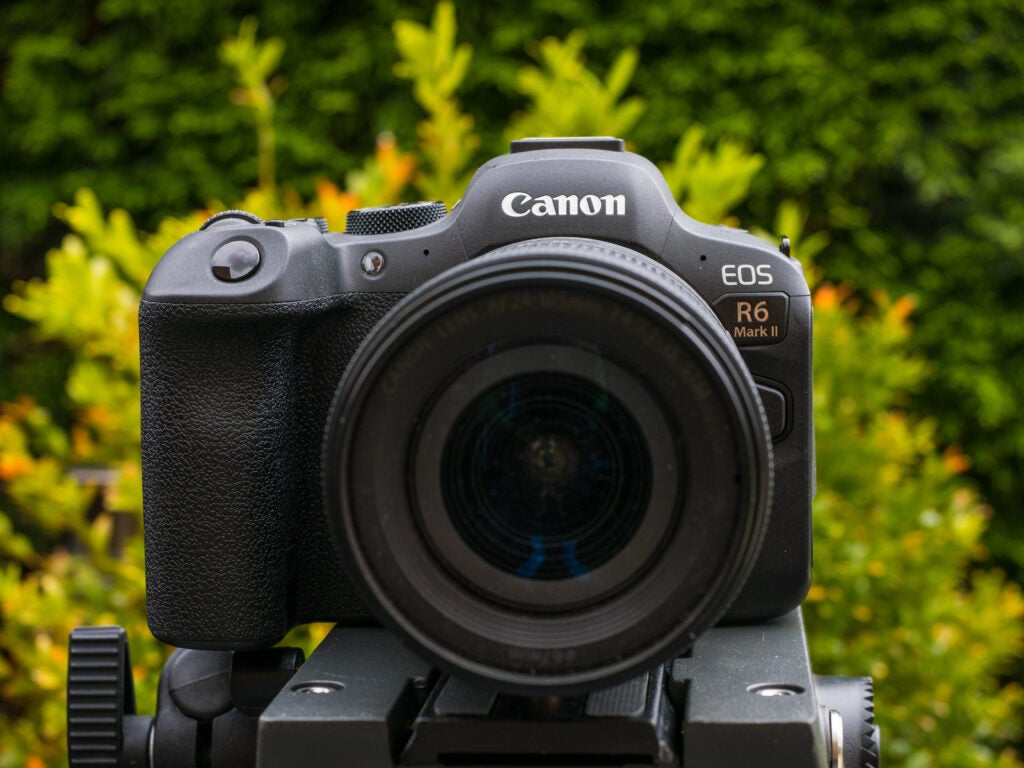
Canon R6 Mark II
A fantastic full-frame all-rounder
Pros
- Increase in resolution to 24-megapixel
- Major video enhancements
- Dual SD card setup
Cons
- Lower resolution than rivals
- No 4K slow motion option
The Canon EOS R6 Mark II is one of the best all-round full-frame cameras you’ll find right now, making it a great pick for anyone considering upgrading from a smaller-sized sensor for the first time.
The R6 Mark II looks very similar to the original Canon EOS R6, sharing the same weight and dimensions as its predecessor. The design is robust with a fair amount of weather-sealing and the grip is well-proportioned to offer users a strong hold over the camera.
One slight difference between the R6 and the R6 Mark II is the control layout. The on/off button has been relocated and there’s now a dedicated switch for toggling between photo and video modes. The joystick that shifts AF points has also been redesigned and there are new Scenes and Creative Features options in the mode dial.
This camera is incredibly versatile, making it a good fit for a variety of scenes ranging from landscapes to sports and even wildlife photography.
The shutter speed is double that found on the older R6 and the Dual Pixel AF II autofocus system supports subject detection for a wider range of subjects. There’s also a Pre Shooting feature that captures the action a half second before the shutter button is fully pressed, along with upgraded Focus Bracketing and up to 8-stops of in-body image stabilisation to fight camera shake.
The camera is capable of capturing 4K video at up to 60p, along with 6K/60p Pro Res RAW footage when paired with an external device like the Atomos Ninja. Slo-mo has also been given an update, now supporting 6x slow motion capture at 180p instead of 120p, and the newer camera supports unrestricted recording times, unlike its predecessor which tapped out at 30 minutes.
Images captured by the 24-megapixel sensor are vibrant without appearing saturated and the camera handles digital noise extremely well. There’s also support for 14-bit RAW files that capture a huge amount of tonal details and make it easier to fix brighter and darker areas later down the line.
If you’re wanting to move up from the original R6, the changes might not be worth the upgrade. However, for those interested in picking up their first full-frame shooter, the Canon EOS R6 Mark II offers a versatile and good value experience all-round.
Reviewer: Matty Graham
Full Review: Canon EOS R6 Mark II

Fujifilm GFX100 II
Best medium format camera
Pros
- Large high-resolution sensor
- Detachable viewfinder
- Lots of upgrades over GFX100/GFX100S
Cons
- On the heavier side
- There are full frame cameras better suited to high-speed photography
If you’re searching for a camera to snap high-resolution images, the Fujifilm GFX100 II is certainly worth considering.
The GFX100 II sits at the top of Fujifilm’s current GFX line-up with its huge 102-megapixel medium format sensor capable of snapping large, detailed images with vibrant colours and great contrast straight out of the camera.
Despite the chunky sensor, the camera remains more compact and lightweight than some similarly-priced full-frame cameras, including the Nikon Z9 and the Canon EOS R3. That said, the GFX100 II definitely isn’t dainty at 1080g without factoring in the lens. The camera has a solid build with a new Bishamon-Tex pattern adorning the grip and has space for two card slots and a variety of ports, including USB-C, HDMI Type-A and Ethernet.
Alongside the main 3.2-inch three-direction tilting touchscreen, there’s a removable EVF with a 120fps refresh rate and a third sub-LCD monitor for glancing at settings atop the camera.
When it comes to features, many of the upgrades on the GFX100 II are powered by the X-Processor 5 – the same image processor found in the Fujifilm X-H2 and X-T5. This includes the new prediction AF algorithm developed for high-speed photography and subject detection for animals, birds, cars, motorcycles, bicycles, aeroplanes, trains, insects and drones.
The camera also includes a faster burst rate of 8fps, along with an increased eight stops of five-axis image stabilisation. The 40fps Canon EOS R6 Mark II and the 120fps Nikon Z9 and Z8 both offer significantly faster burst rates but with smaller, full-frame sensors.
The battery life is solid, delivering 540 stills or around an hour of 8K/30p recording, while the video quality is incredibly sharp with true-to-life colours and good stabilisation. If you’re looking to capture very high-resolution stills and video, the Fujifilm GFX100 II is a great choice.
Reviewer: Hannah Davies
Full Review: Fujifilm GFX100 II
We also considered…
We’ve reviewed
See all reviewsFAQs
Canon and Nikon are two major brands in the camera market, but Nikon has impressed us more in recent years consistently coming out on top in both the mirrorless and DSLR categories.
It depends on what you need. The difference between the two is that DSLRs rely on an optical viewfinder and a mirror to bounce light off the sensor, while mirrorless cameras feature an electronic viewfinder and don’t require a mirror. This makes mirrorless cameras more compact, lightweight and often better equipped for video, while DSLRs usually have a better grip and longer battery life.
Mirrorless cameras generally have a shorter battery life than DSLRs. They also don’t tend to offer as much grip in terms of their physical design.


